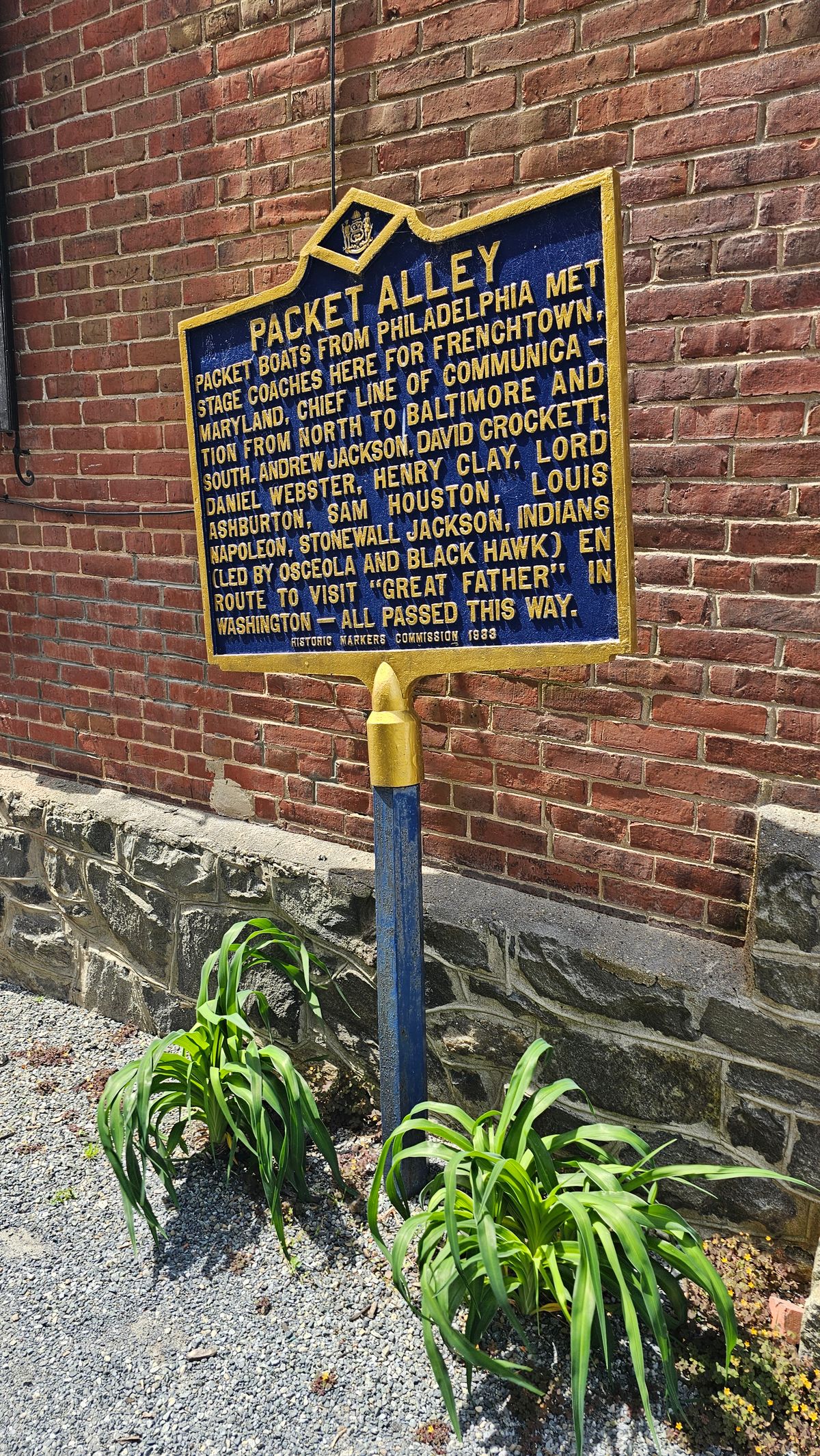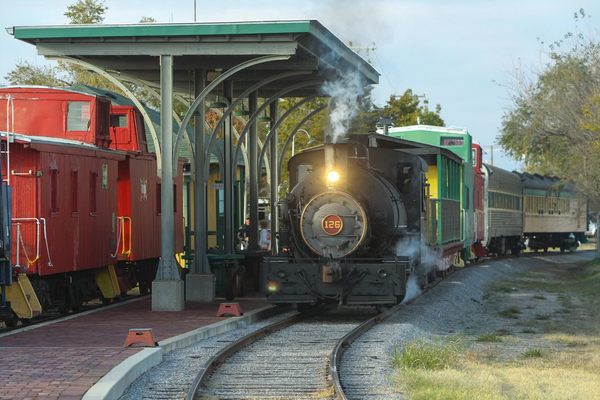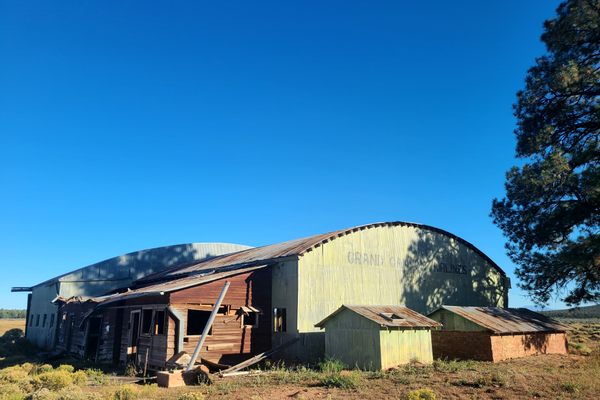About
For much of Delaware’s history, it has acted as a transportation hub and a bridge between the northern and southern United States. Even today, visitors are more likely to drive through Delaware than stop within its borders. One important link between north and south could be found at Packet Alley, in New Castle, Delaware, where many of history’s most famous figures briefly set foot on their way to more interesting destinations.
New Castle, founded by the famed Dutch colonial governor Peter Stuyvesant in 1651, was built for its strategic importance as a transportation hub. In particular, the city was a critical link between Philadelphia and Baltimore, cutting off days of transportation around the Chesapeake Bay.
Freight and passenger service would be brought to New Castle on small boats, known as packet boats. These boats were named for the packets, or mail, that they would deliver. By 1790, there was a wharf built in front of what would become Packet Alley. At this point, southbound cargo and passengers would disembark and then hop on to a stagecoach destined for Frenchtown, Maryland (today a ghost town) to Baltimore, Washington D.C., and points unknown.
Many of history’s most famous figures made this transfer. A historic sign placed at the alleyway notes that people ranging from early statesmen such as Henry Clay, Davy Crockett, and Andrew Jackson, to foreign dignitaries such as Lord Ashburton and Louis Napoleon, to Indigenous leaders including Chiefs Osceola and Black Hawk, all stopped briefly in this alley to be picked up and taken elsewhere. This continued through 1824, when a great fire ripped through the city, burning down The Strand. Soon after, construction would begin on the Chesapeake and Delaware Canal. The New Castle & Frenchtown Railroad would also open in 1833, and travelers would stay near Packet Alley, and then take the train across the state. Further expansions in American transportation would cut New Castle out entirely, rendering this former strategic transportation destination irrelevant on the national stage.
That was how the alley would remain for many years, existing mostly as an outlet for private driveways, with few visible remnants of its heyday as a transportation hub. Today, Packet Alley remains quiet, perhaps most notable as a picturesque backdrop for a social media photo. It’s best known for a ghost sign of an advertisement for Ivory Soap, which remains from the neighboring Boulden’s Store, a dry goods store that existed along The Strand for a century.
However, for a few aging Delawareans, Packet Alley remains a magical place. It was the setting for a 1951 children’s book named Packet Alley: A Magic Story of Now and Long Ago, written by two co-authors who together pseudonymously went by the name of Elisabeth Meg. The premise of the book is of a pair of twins who are given a pair of magic glasses by a mysterious figure, which allow them to see into the past, all at Packet Alley. Long out of print, the story is still found in libraries and classrooms, and is considered by some to be one of “Delaware’s most beloved books.” For these people, the characters of Cathie and Ted Brandon made the story of Packet Alley come alive, as they reminisce about the times when Delaware was adjacent to the nation’s history.
Related Tags
Community Contributors
Added By
Published
July 16, 2024
Sources
- https://archives.delaware.gov/delaware-historical-markers/packet-alley/
- https://www.nc-chap.org/packetalley/chaptersthreefour.pdf
- http://jnjreid.com/cdb/meg.html
- https://delawarebayshorebyway.org/attractions/packet-alley/
- https://nc-chap.org/lectures/fall_2015/13%20transportation.pdf
- https://archivesfiles.delaware.gov/markers/pdfs/NCC_024_Collected_Research_Materials.pdf




























